
[I]n the two centuries since inventor Nicéphore Niépce first captured a simple view from the window of his chateau at Le Gras, photography has come to enrich and even dominate human experience. Regardless of whether images are displayed on giant billboards, in household frames or virtual albums, almost every exposure is strategized in some way. Much of the medium, bar rare unbridled instances, presents constructed and refined depictions that seek to sell an object, service, or even an idea of oneself.
Miksang is an alternative philosophy of photography that eschews manipulative sales motives and egotistical goals, instead focusing inward on perception and a sensory journey enhanced by holding a camera. A stripped-down, Buddhism-influenced approach, Miksang takes its name from the Tibetan word meaning “Good Eye.” As a practice it can offer reprise from the relentless need to rush, a fresh recognition of everyday beauty, and the exchange of raw, real moments.
Over the last 35 years professional photographer Michael Wood and Julie DuBose have been cultivating and codifying Miksang into a discipline. In early May the pair concluded a ten-day workshop for an international group of participants in Kyoto, the first time Miksang had been taught in Asia. Throughout the month, unique photographs from their respective archives intrigued visitors to The Terminal Kyoto, a gracefully restored machiya townhouse, as part of the KG+ exhibition, “Shitsurai—Offerings II.”
I sat down with this unassuming duo one morning at the kitchen table of their interim home nearby the Heian Shrine to find out more about their practice.
—Elle Murrell
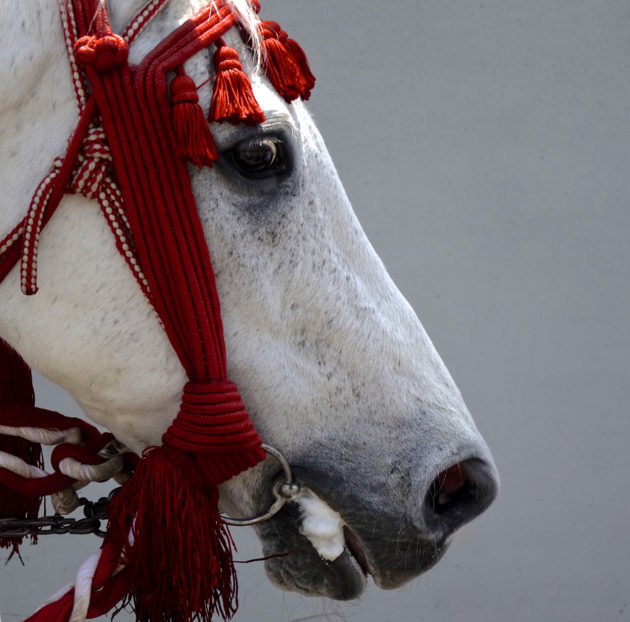
ELLE MURRELL: Michael and Julie, how did Miksang come into your lives?
MICHAEL WOOD: In 1976 I started meditating in the Tibetan Buddhist tradition and I met some teachers. Having been a professional photographer and having gone to visual arts school, I started noticing that, because of meditation practice, my world of perception was changing. Things were coming out of the blue and I wasn’t creating photographs, I was just seeing these very unusual things happening in my visual world. I began photographing them. This may have happened only once every month, but these perceptions seemed completely outside of anything I had experienced in all of my photographic training. This was very interesting to me, so I started paying attention to it.
In 1979 I met our Tibetan Buddhist teacher, Chögyam Trungpa. There wasn’t anything particular that happened, although I got to spend a couple days with him being his attendant and driver. It was lovely, but it wasn’t like that was the beginning of what became Miksang. After he left town I saw some of his photographs, which were extremely different, very outrageous, unlike anything I had ever seen before. I pretty much decided overnight that I wanted to change my entire photographic trajectory and do more meditative, contemplative photography rather than commercial magazine or newspaper work, which was a hard financial decision for me.
I realized I had to put myself in a limited situation to learn how to see in an open, receptive way so that, as in meditation practice, I could learn to see the world with a mind of stillness and equanimity. To do that, the first thing I did was spend a year breaking the habits of being a photographer.
Throughout 1980 and 1981 I confined myself to my backyard and then to my laneway, working each day to see beyond the templates of how and what to see that I had learned in photography school. I wanted to see without any photographic or personal filters or projections, purely, without bias and without imposing a point of view on what I was seeing.
In 1983, when I was asked to teach, I went back through my images from this period and realized that I had been seeing the elements of form. I decided to begin with instruction on how to synchronize the eye and mind through focusing the intention to see one particular element of form at a time. This became the basis for the first Miksang course.
You, Julie?
JULIE DUBOSE: I met Michael and he showed me his images.
We had been hanging out for a year before I took a course from him in 1998. Even though I had no active interest in photography, Michael and I shared the stream of Chögyam Trungpa’s teachings and I had been meditating for more than 20 years. So there was common ground. When I saw Michael’s images I recognized his experience of his visual world and its great simplicity. I had similar experiences before, when my mind was loose and open. After meditating, sometimes everything would appear pristine and clear, sharp and vivid, and I felt I was floating through the world. So when I saw Michael’s photographs I realized that I was seeing the world through the eyes of meditative awareness.
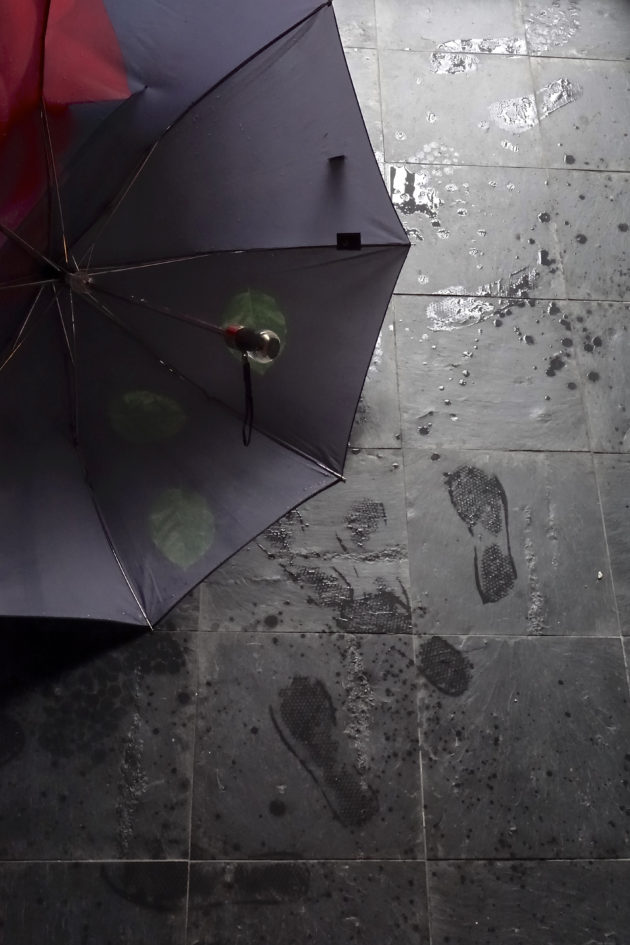
How does Miksang differ from other forms of photography?
MW: Much of photography is creative: you have a particular theme in mind and you want to achieve some sort of journalistic or commercial expression. Generally, there’s also a predetermined story line involved. Miksang is more about simply expressing the things you see in a visual form without re-interpretation. You aren’t trying to sell anything to anyone. The subject matter encompasses much more of our ordinary world and everyday life, and isn’t about going out on a special assignment. You are able to be open and receptive to what you see, and begin to express it exactly as you see it. That’s it.
We often say to people that this is not a photography course. “Well, why do I have my USD $8,000 Nikon with me?” they ask. My response: “It’s a course about learning to see and exploring perception.”
JD: The fruition is not the photograph. Clear and direct seeing is the fruition, and the expression of that is the image. Miksang is about the experience of seeing, connecting and appreciating.
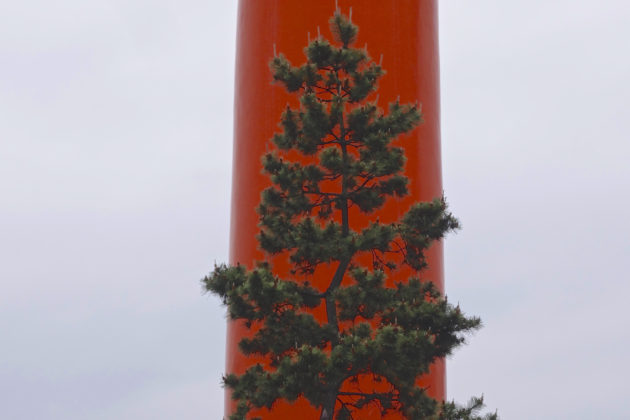
Your books Opening the Good Eye: A Path to True Seeing (Michael), and Effortless Beauty: Photography as an Expression of Eye, Mind & Heart (Julie) raise the concept of Miksang Mind. What is this?
MW: Our distracted, thinking mind isn’t ever in the present moment. It’s in the past and future. Yet awareness is still and present and it allows us to perceive whatever appears to us clearly and without bias. This is like the saying: “There’s the pond with wind and waves, which is the thinking, distracted mind and then there’s the calm pond that reflects perfectly what is.” The latter is Miksang Mind.
JD: Think of a mirror—like those that used to be inside our cameras. It reflects perfectly, unless of course it’s dirty with smudges and dust. The Miksang journey is cleaning that mirror so that what is reflected is pure.
MW: If Miksang had two roots in the ground, one would be Chögyam Trungpa’s book True Perception: The Path of Dharma Art and the other, his book, Shambhala: The Sacred Path of the Warrior. When you read these you find that Trungpa never talks about any art forms. What he says instead is that Shambhala Art or Dharma Art is simply the activity of non-aggression, just mind opening, experiencing and expressing. You can do this with a brush, flowers, camera, with any medium at all!
In addition to being emotive, Miksang images often exude simple elegance, intriguing light elements and insightful framing. Does the approach encourage photographers to seek out a particular subject matter?
JD: We are not teaching people what to see, so whatever they do see is their own personal journey. We are teaching how to see, rather than teaching a new template of what is OK and what is not. We teach how to be open, receptive and aware rather than speedy, distracted, and impulsive. We want people to be able to recognize when they are stopped by a fresh perception.
MW: At the end of teaching our levels, we encourage people to just let it all go, dissolve even the ‘Miksang database’ and not feel that they have to find some ‘Miksang subject’— because there isn’t one. Simplicity, seeing one thing at a time, is not a template. It’s just seeing one thing at a time. Which is something that people often don’t do.
As Miksang practitioners, do you now view the world differently?
JD: I can’t really make a contrast anymore between pre-Miksang and now. I have been doing this for so many years that it is really fully blended with my experience, rather than something I do.
MW: About 90 per cent of the things I see and photograph are part of my everyday world. I don’t have a sense of, “I need to go over there, because it’s better, more visually interesting.” Being where we are and seeing that, seeing the ordinary as extraordinary, is the foundation of Miksang. As soon as we start thinking, “If only I could go to California, or the Himalayas, or Japan…” we are out of the moment and aren’t going to notice the little sesame bun.

Doesn’t having a camera, and the thought of making a photograph of what you are witnessing, objectify the whole experience?
JD: Michael actually asked one of his teachers this question; it comes up for a lot of people. There’s always one answer, which is that this is not really about taking the photo. The camera reminds us to see. And the camera is the instrument of expression, allowing us to have a deeper relationship with our perception by honoring what we are seeing through taking a photograph. For example, Chögyam Trungpa always used to bow to what he had photographed.
Secondly, we photograph what we have seen so we can share an experience with others. This is what makes the world a beautiful place, the relationships we build with the others who inhabit this planet with us. It’s not about posting images on Facebook to get credit or praise.
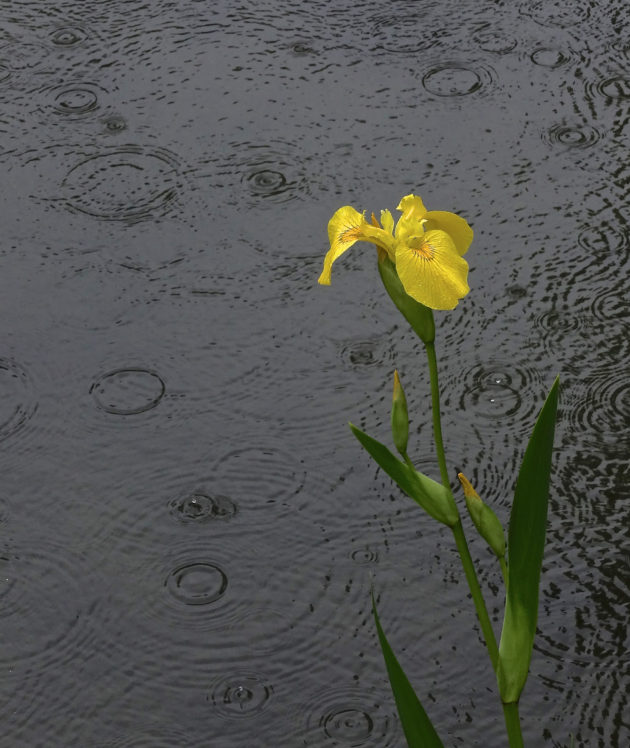
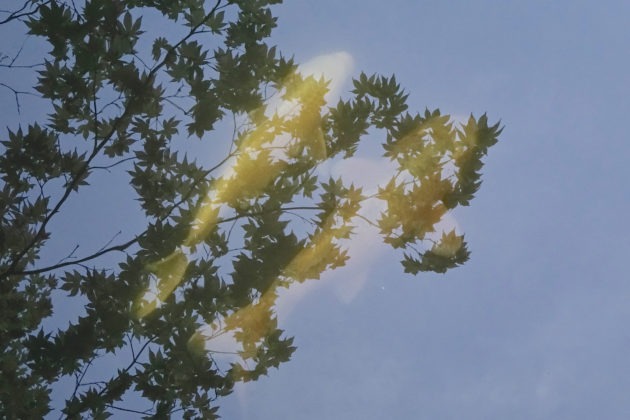
Why do you think this practice, which can be understood as more of a lifestyle philosophy, appeals to people?
JD: What we are doing with Miksang is connecting, letting go of all our preoccupations and our thoughts, and resting in a state of calm abiding. That is something anyone can do, but some people are more drawn to wanting to do it than others.
People who are attracted to Miksang are usually very attracted to the moments of brilliant direct perception that we all experience from time to time. We get letters from people who have seen our images that say, “I’ve been seeing this way” or “I was looking for this” and “I’m so happy I’ve found you.” And what I hear in every class is: “I’ll never see the world in the same way again.”
MW: Why do people meditate? Because they want to live more fully. The reason people practice Miksang is because they want to live more fully, see more fully, and to share that.
A friend of mine looked into our website’s analytics to try to figure out what words people had typed to arrive at it. The most common word search wasn’t “Miksang”—it was “photography and spiritual expression” or “photography and meditation.” There are 5,000 people per week coming to that site. It’s pretty interesting that there is this group of people in society who are looking for an alternative to speed and superficial experience.
Is Miksang influenced by Japanese culture or Japanese art forms in any way?
JD: No, not really. But we have always felt that because of Japan’s history of a close relationship between meditation and contemplative art forms, Japanese people might really resonate with this approach to photography.
MW: Miksang arose free from any culture. However, I think there’s a slight sense of resonation with Japanese culture, and there’s the simplicity aspect. Haiku poetry is a sort of distance relative—Haiku poets didn’t have anything to sell, they just were expressing their experience in a very direct, perceptual way as they lived their lives.
Julie, it’s your second visit to Kyoto and the first for you Michael. How do you both reflect on your time in the city?
JD: Kyoto is so amazing. There are just a million combinations of texture and color. There’s so much attention to how things are placed and to natural harmony. Everything is done in what the craftsperson feels is the best possible way. The sidewalks and the porches are all art forms. Even the “Samurai Hedge Trimmers” amaze us. They’re very particular and precise. The care that they take is inspiring.
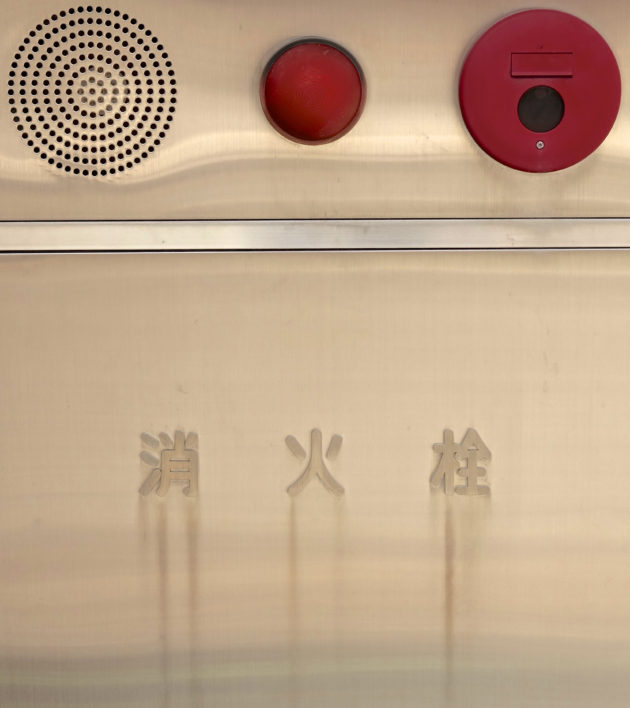
MW: I also found that I can walk down the street and, although everyone is talking, I have no idea what people are saying, so I am able to focus all of my attention on looking. I can’t read signs, so I am really just noticing shapes, colors, forms and various manifestations. If I could have a language transplant and be able to function, I would spend a lot more time here. Kyoto is a wonderful place to be, it’s extremely harmonious and a lovely mixture of cosmopolitan and natural.
Have any particular Kyoto encounters resonated with you?
MW: I was sitting on a bench near an art gallery downtown one day, and above me there were two blue-and-black butterflies chasing each other around in circles. I was just watching the beautiful dance, not thinking much. When they disappeared and I stood up, I realized that behind my shoulder was an elderly Japanese man. He had been there the whole time. Then he simply bowed, and that was that. Older Japanese people seem very attentive to their environment and I think it’s great. The younger people, unfortunately like those in the U.S., are often plugged into devices and their awareness is internalized.
JD: Every new generation has to forge their own way, and it’s important for them to feel like they’re doing that. This is a whole new generation that is wired and we just aren’t. It’s kind of uncertain how that is going to evolve and how cultural and artistic expression will change, and if existing forms will be transmitted to future generations.
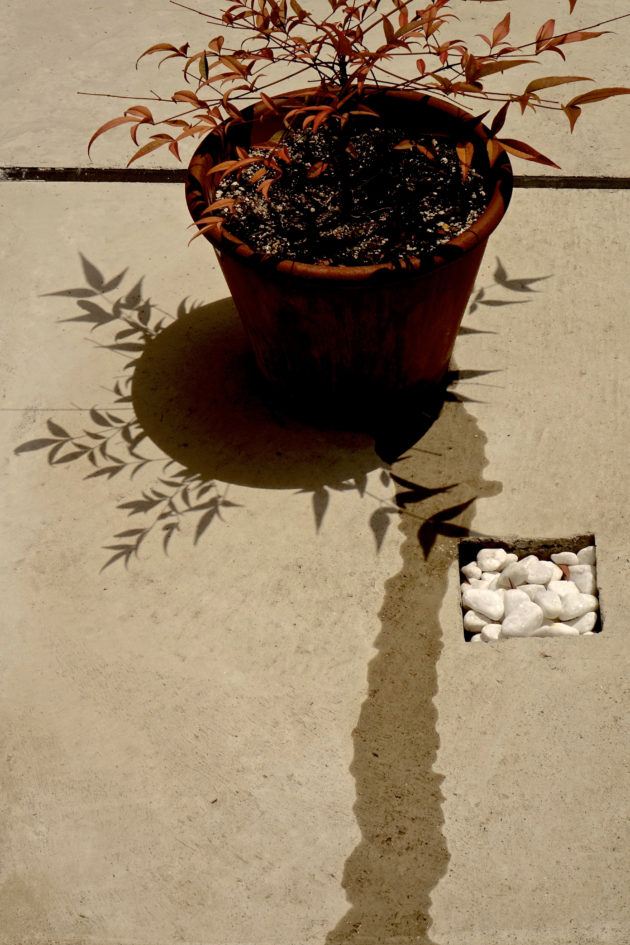
I was walking down Marutamachi Street with one of my friends and we came to a sidewalk in the front of someone’s house. There were four pots placed on the gray background of the concrete, each pot casting it’s own shadow. It was just beautiful, totally simple. A woman was watering them and I took photographs as water began running out of the pots, forming trails on the concrete. I began showing her my photos and she was completely touched, saying, “Thankyou so much for seeing my plants.” It was wonderful; I felt like I had made a connection with her, just through seeing and appreciating something that meant so much to her.
MW: As we were leaving the the Hall of Prince Shotoku’s Soul at Horyuji Temple, we found a few interesting things to buy and went up to a very dignified man, perhaps 60 years old, who writes the calligraphy in peoples’ books. I asked a friend who was translating to ask him, “What’s in this packet?” “Something soft,” was his brief answer. I had a Tibetan healing item that I then took out and I asked, “What do you think of this?” He and his friend were eagerly examining it and talking. Through this whole back-and-forth they seemed surprised someone had come in paying attention and actually wanting to talk. I had purchased a card and then the calligrapher decided to put extra dates on it.
We were really starting to build a relationship, which was pretty interesting because I’m sure many people come in, give him their books to sign, and then just leave. At our parting there was a lot of bowing, smiling and bidding safe travels. It was really wonderful because we just don’t have these experiences so often, especially in the U.S.
JD: One thing about Miksang practice is that because you are out in the world and you are cultivating this approach that is open and receptive, it brings that outlook to bear on every person you see and every aspect of what you see. There’s a natural warmth and relaxation that comes from this. Things slow down and there’s room for appreciation—not necessarily at certain special times but woven through the day, whatever happens.
There’s also an openness to things that don’t quite fit, that don’t quite follow rules or expectations. This can bring us out of our thinking mind into the present moment so that we can pay attention to what is happening. Through this we can have new, unexpected experiences of the world. This was happening all the time we were in Japan. It was really wondrous.
